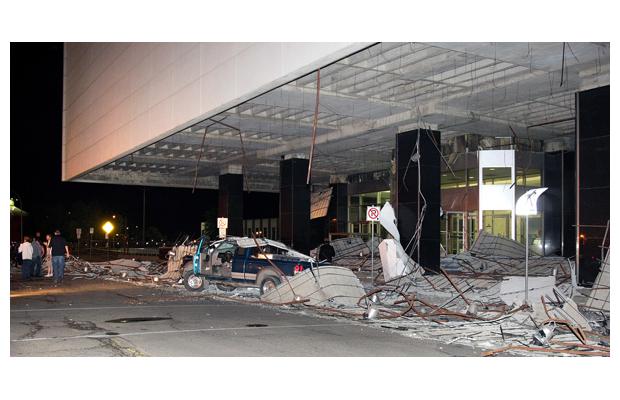
© UnknownCN Tower damaged in massive thunderstorm
As the clock wound down on one of Edmonton's few truly warm days of this summer, the skies over the city started to turn ominous shades of purple, blue and greenish-grey.
The scatters of rain that fell in the early evening were pale hint of the violent wind, hail and rain that was to follow, felling power lines, snapping trees in half, and plunging Whyte Avenue into blackness.
By 10 p.m., the winds were so severe they tore down the awning of the CN Tower at 104th Avenue and 100th Street. The building has a second floor wider than its base and the material that made up the overhang came crashing down on an SUV and a truck.
"The winds were just howling," said Brian Danyluk, who was driving down the street just as the crash happened and stopped to photograph the wreckage.
